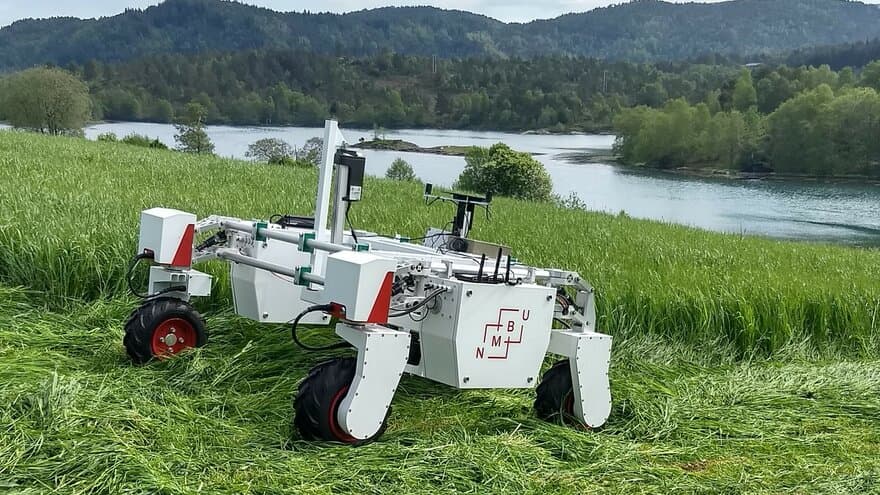How can autonomous robots operate safely in agriculture alongside humans? José Carlos Mayoral Baños at NMBU is teaching robots to detect people and stop when they get too close.
Autonomous robots are becoming increasingly common in agriculture, making safety a critical factor.
“When self-driving robots the size of cars work alongside humans, the risk of injury clearly increases. We need to ensure that the robots are as safe as possible,” says José Carlos Mayoral Baños.
In his PhD research at NMBU, Baños has developed a navigation system for agricultural robots. The goal is to make them safer in open fields where people are present. Baños’ work is part of the GrassRobotics project, where researchers are developing a lightweight agricultural robot that can cut, collect, and transport grass without using heavy equipment that compacts the soil.
Baños has been responsible for teaching robots to detect people while mowing. When someone approaches, the robot should be able to assess whether it needs to slow down or stop completely, to avoid the risk of collision.
He has conducted a thorough risk assessment based on international safety standards, which serves as a guide for making the robot safer. In addition, he has developed software based on this assessment and created custom metrics to evaluate how well the safety measures work. These methods have been used to test safety functions tailored to the robot Thorvald, which is used in the project.
“Many developers focus only on obstacle avoidance. That’s not enough. Safety must be an integrated part of the software, especially when robots are meant to interact with humans in open environments,” says Baños.
All the work has been tested both in simulations and in real-world scenarios. The results show that the robot became significantly safer to use.
Baños believes the research can have a major impact both in academia and in practical applications.
“In the long term, these methods can contribute to the development of safer robot software globally,” he says.
The goals of the PhD project have been to:
- Develop safe navigation software that can be used on any platform performing tasks in open agricultural fields.
- Create better metrics to evaluate a robot’s safety, using well-known risk methodologies typically applied in project management.
- Implement safety functions that can handle the most important hazards that may arise during the operation of an autonomous mobile robot.
José Carlos Mayoral Baños will defend his PhD thesis “Risk Assessment for Safe Autonomous Navigation in Agriculture: Safety Systems and Risk Metrics” on 26 September 2025. Read more about the event here.
